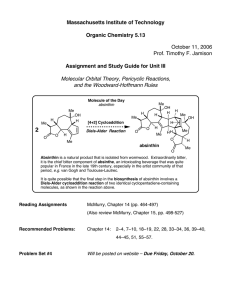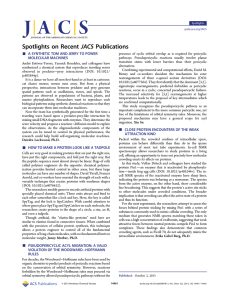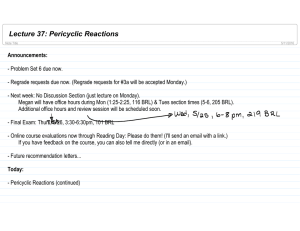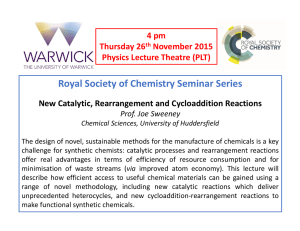Document 13496478
advertisement
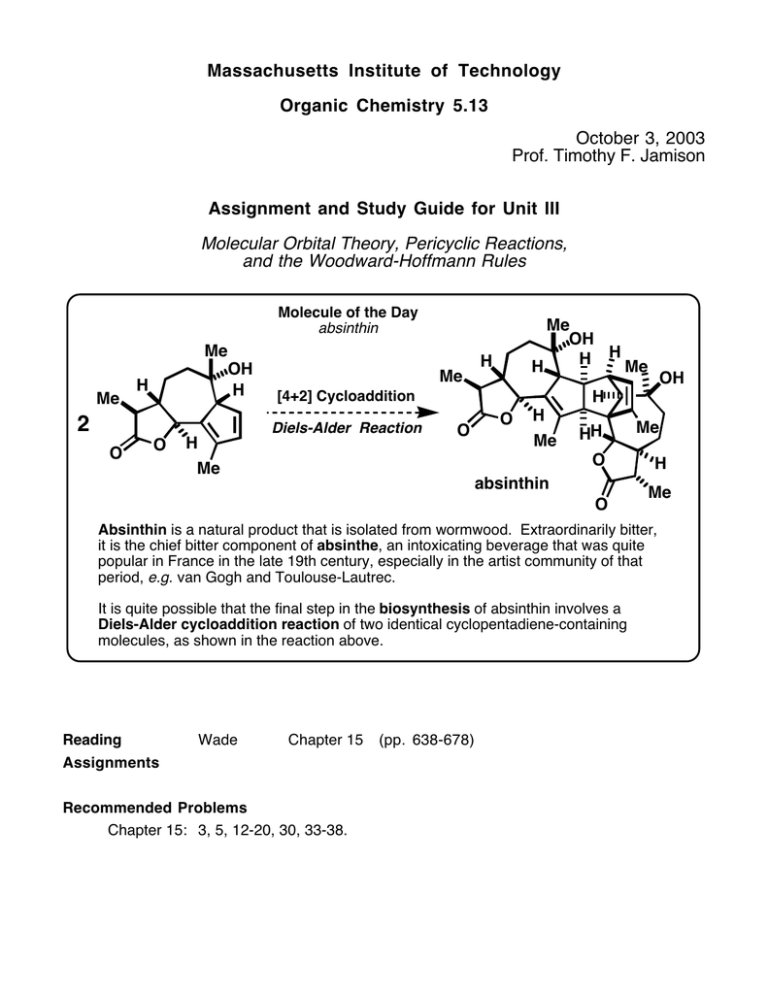
Massachusetts Institute of Technology Organic Chemistry 5.13 October 3, 2003 Prof. Timothy F. Jamison Assignment and Study Guide for Unit III Molecular Orbital Theory, Pericyclic Reactions, and the Woodward-Hoffmann Rules Molecule of the Day absinthin Me Me OH H H 2 Me O H H Me OH H [4+2] Cycloaddition Diels-Alder Reaction O Me OH H H Me H O O H Me HH O absinthin O Me H Me Absinthin is a natural product that is isolated from wormwood. Extraordinarily bitter, it is the chief bitter component of absinthe, an intoxicating beverage that was quite popular in France in the late 19th century, especially in the artist community of that period, e.g. van Gogh and Toulouse-Lautrec. It is quite possible that the final step in the biosynthesis of absinthin involves a Diels-Alder cycloaddition reaction of two identical cyclopentadiene-containing molecules, as shown in the reaction above. Reading Assignments Wade Chapter 15 Recommended Problems Chapter 15: 3, 5, 12-20, 30, 33-38. (pp. 638-678) "….in the synthesis of vitamin B-12 R. B. Woodward hit on a puzzle whose analysis become the point of departure for the discovery of the Woodward-Hoffmann rules concerning the role of orbital symmetry in chemical reactions. This development ushered in a new era in the theory of organic chemistry, and it is particularly fitting that it was the protagonist of modern natural product synthesis who triggered the final breakthrough of the use of the quantum mechanical model of structure and reactivity in organic chemistry, an advance that parallels the establishment of the classical structural theory, the tetrahedral model of carbon, the octet rule, and conformational analysis." Albert Eschenmoser Science 1977, 196, 1410. "Violations? There are none. Nor can violations be expected of so fundamental a principle…" R. B. Woodward and R. Hoffmann, "The Conservation of Orbital Symmetry" (1970). Study Guide General Aims of this Unit: 1. We will learn to recognize pericyclic reactions and to classify them as being electrocyclic processes, cycloadditions, or sigmatropic rearrangements. 2. We will develop a general understanding of the theoretical basis of the WoodwardHoffmann Rules based on the Frontier Molecular Orbital Theory of Fukui. 3. We will learn how to apply the Woodward-Hoffmann Rules to predict the stereochemical outcome of pericyclic reactions. 4. We will study several pericyclic reactions in detail, learning how to predict the products of these reactions and how to employ them in synthesis. Specifically, we will focus our attention on the Diels-Alder reaction, the Cope rearrangement, the Claisen rearrangement, and ketene [2+2] cycloadditions.
